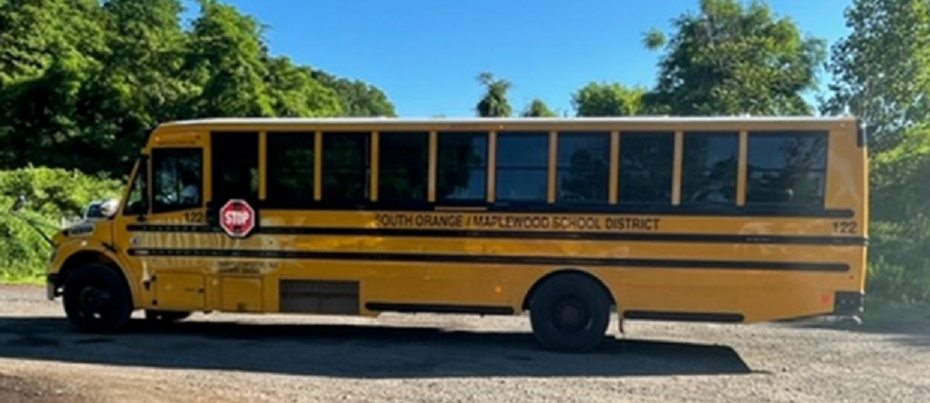Jeffrey Bennett and his family reside in the South Orange-Maplewood school district.

South Orange-Maplewood Public Schools District is a racially-diverse school system: as of 2021-22, 57% of the kindergarteners are White, 24% are African-American, 8% are Latino, 4% are Asian, and 7% are multiracial. It is also an economically-diverse school system, with students who live in grand pre-WWII mansions, have nannies, international travel, and tutors, and other students whose families are struggling, plus many families in between.
Like many diverse places, the overall diversity exists within neighborhood segregation. One of the six elementary schools– Seth Boyden, located in southern Maplewood– always had a large share of the community’s low-income and African-American families. 48% of Boyden kindergarteners are African-American and 71.4% came from the lowest socioeconomic third.
Starting in 2001, South Orange-Maplewood (SOMA) started a voluntary opt-in program where Boyden became a “Multiple Intelligences Demonstration School” and students from other sections of the community could opt-into Boyden. Still, Boyden’s demographics remained far different from other schools. SOMA also had a program of pairing two schools in a K-2, 3-5 system, but since the neighborhoods were majority-white anyway, it did nothing for integration and was just an anachronism.
By the late 2010s, SOMA decided it could not accept Boyden’s disparity, nor the inverse high-socioeconomic disparities in some of its other elementary schools.
In 2018 and 2019, statements by the superintendents seemed to indicate SOMA would adopt a “Controlled Choice” model, where parents would have a role in placement and perhaps there would be magnet themes. One successful BOE candidate who became president in 2021 said “I’m a big proponent of going to the Montclair model.”
But the integration plan that passed in 2020 under the superintendentship of Ronald Taylor would be nothing like Montclair’s.
First, there are no magnet themes. The six elementary schools are academically identical and the Multiple Intelligences orientation of Boyden was officially jettisoned.
Second, the SOMA plan uses involuntary assignment based on a random number given to each student by the Superintendent’s office. Winners of the lottery get proximate schools and losers of the lottery get distant schools. Along with the random assignment placement protocol, the SOMA BOE passed a strict no-transfer policy that frankly forbids “accommodating families.”
The Board of Education abdicated any role in providing transportation, except for children living over 2.0 miles from school, where state law requires a bus. This compares badly to Montclair’s 1.0 mile threshold for bussing. For all the intricacies of how SOMA decided which schools students would be assigned to a school, it never gave a thought to how any kid would get there. Some of Superintendent Taylor’s presentations don’t even mention transportation.
With zero self-awareness, the BOE replaced the words that placement was to be done “in the best interests of students,” with placement through the algorithm to be done “with the law and practices of Section III(B) of the District’s Comprehensive Equity Plan.”
Indeed, the BOE was honest to delete the “best interests of students.” When the program started, 5% of children were assigned to schools over 3 miles away, a bus journey of nearly an hour which requires five year olds to meet their bus at 7:00 AM. Elementary schoolers living up to 2.0 miles away are expected to walk if they don’t have an adult who can drive.
In SOMA’s pursuit of equity, it replaced zoned schools with a system based on random assignments that treats an affluent remote-working couple with a nanny the same as it would a single parent who works in-person. It is indifferent to needs/preferences, so it assigns families who want a bus to schools under 2.0 miles away in schools that don’t offer one, while it assigns families whose parental work schedules don’t allow their kids to use a bus to schools that are over 2.0 miles away to schools where a bus is thus unusable for them. It assigns families who need as early a school start as possible to schools that start at 8:45 while it assigns other families that prefer a late start to schools that start at 8:05.
In response to the likelihood that parents would have impossible work situations, lack a car, or have crises with younger children’s childcare and beg for transfers, the Board of Education simply prohibits transfers. In a policy unanimously passed by the whole board:
“Hardship does not include childcare needs, transportation, work hours, and peer group placement.”
I wish I could ask the Board of Education if these circumstances aren’t considered “hardships,” what would be? I wish I could ask the BOE who is going to be more hurt by not being able to get to work on time: someone who is working-class with a tough boss or someone who is an executive?
So far, most of the protests to the implementation of the Intentional Integration Initiative have come from white people, but the results of this program have disproportionately impacted low-income and Black students. Whereas medium and high-socioeconomic kindergarteners were assigned to school 1.0 miles away, the average low-socioeconomic kindergartener was assigned to a school 1.7 miles away. Whereas only 4% of white kindergarteners were assigned to a school over three miles away, 13% of Black kindergarteners were.

Placements use random numbers and are effectively arbitrary. There are streets where four children go to four different schools. Children are sent long distances to schools in neighborhoods where their demographic group is already overrepresented. Children who live 50 feet from a school are sent to schools 1-3 miles away.
The integration plan is impossible for train commuters, whose trip into New York is at the mercy of New Jersey Transit’s schedule. If children are assigned to a school 15 minutes from home that starts at 8:45, the parent who does dropoff cannot get to New York Penn Station before 10:25 AM.
As Superintendent Taylor has said, “We want our families to be happy, but at the same time we cannot offer even a single exception, because that would be inequitable and against the policy of the board and also against the spirit of intentional integration.”
If anything is worse than Ronald Taylor and the BOE’s indifference to childcare, transportation, and work struggles (that they reduce it to emotional states like “happiness” and “angst”), it is that they don’t even want to know.
The Board of Education originally called for an “Experience Survey” back in 2020 when the integration plan was passed, but no survey was ever conducted, so the Board of Education doesn’t even know how many kids are walking, carpooling, or being driven by a parent. When a new Board of Education member who is not part of the BOE’s majority clique attempted to ask why a survey was never done, the Board of Education attorney disallowed the discussion until her office could “investigate (see 3:12:35).”
When the intentional integration initiative was developed in 2018 and 2019 it had a lot of support and no opposition. I personally was a supporter. However, all of us assumed a level of empathy, common sense, and competence from the Board of Education and Superintendent that is currently absent.




